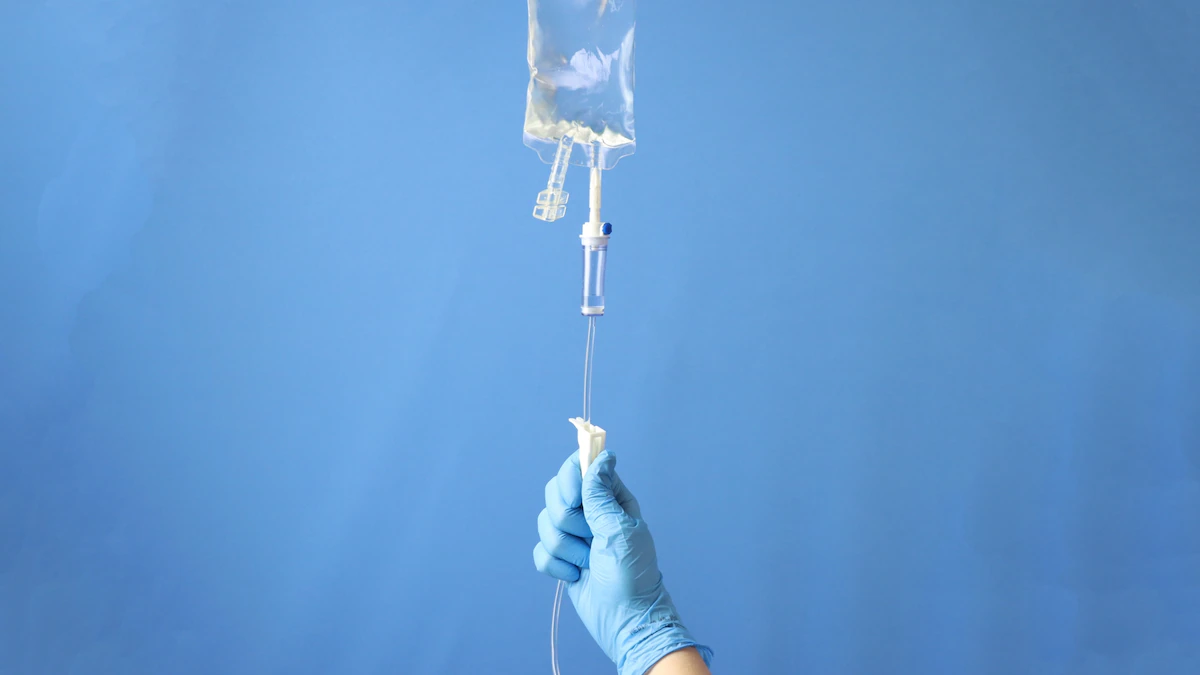
It seems like a good idea in theory. We all have toxic metals in our bodies—including arsenic and lead—that aren’t supposed to be there. We’re exposed through the food we eat, air we breathe, and water we drink. So why not use existing treatments to remove, or chelate, them?
While such metals do cause damage at high levels, “having a teeny tiny amount is the price of admission of being on Earth,” says Adam Blumenberg, a toxicologist and emergency medicine physician at Columbia University’s Vagelos College of Physicians and Surgeons in New York.
Chelation therapy successfully treats the small number of people who have accumulated very high amounts of heavy metals in their bodies, and the treatment isn’t without risks. Yet some holistic medicine circles and social media communities have popularized the notion that chelating low to moderate levels of metal with medicines or herbs improves symptoms like headaches and insomnia or wards off autism, Alzheimer’s, or other diseases. These ideas have not been born out in research.
When scientists have examined chelation therapy’s potential for treating certain specific health conditions, findings have been mixed or fallen short. In some cases, removing metals with chelating drugs is actually detrimental, as scientists studying early Alzheimer’s disease reported earlier this year. Iron levels decreased, but cognitive decline accelerated.
While metals are easy scapegoats for vague symptoms without a clear diagnosis, true heavy metal toxicity is extremely rare, Blumenberg says. “People hear a scary statement like, there is lead in my body, but it only becomes medically relevant when the amount exceeds a certain [high-level] cutoff.”
But while dangerous metals abound in the environments in some parts of the world, they are relatively rare in the U.S. Take cadmium and lead, where the average American’s blood levels are well below toxic thresholds, according to 2023 figures from the U.S. National Center for Health Statistics. These numbers have plummeted in the past few decades, to roughly half what they were 25 years earlier. Blood mercury levels have also declined.
Still, some people in the U.S. do have extra exposure. For example, levels of arsenic and lead are significantly higher in the urban soil of low-income or minority communities in the U.S.
What exactly is chelation therapy—and who benefits from it?
A chelator is any compound that attracts metal ions in the body and clings to it like a lobster grasping the crab it plans to eat for dinner. (The Greek word chele actually means claw.) The compounds remain united as they are excreted, generally through urine.
Intravenous drugs or pills prescribed for chelation are valuable treatments for metal poisoning. In the U.S., this primarily involves young children exposed to lead in paint or water pipes, workers who accidentally inhale or touch metals in industrial plants, or people with conditions like Wilson’s disease, where copper dangerously builds up in organs.
The treatments do involve some risk. Chelators don’t discriminate, so they can also remove metals the body needs, like zinc, along with those intended, Blumenberg says. And in past years there have been deaths when the chelating drug was infused too quickly. The trade-off is worth it only when the benefit is clear.
These treatments are used infrequently; only seven out of 100,000 children tested in the U.S. have toxic lead levels high enough to require chelation. “The times where we recommend chelation for patients are few and far between,” says William Eggleston, a clinical toxicologist and assistant clinical director of the Upstate New York Poison Center in Syracuse.
Chelating low levels of toxic metals are generally ineffective. Removing lead from the blood of children with mildly elevated levels doesn’t improve their learning or behavior.
Does chelation help with heart problems?
Aside from rare conditions and poison cases, one area of chelation research that has been well-studied is the heart.
A 2024 JAMA study looked at people with diabetes who’d had a heart attack before and are at especially high risk for another attack or stroke. Undergoing 40 weekly infusions with a prescription chelating drug did not result in fewer cardiac episodes even though blood lead levels fell an average of 60 percent. This contradicts results from a similar study a decade earlier where chelation provided modest cardiac protections.
The trial’s inability to replicate the earlier findings is likely because lead levels are so much lower now, says Gervasio Lamas, chief of cardiology at Mount Sinai Hospital in Miami Beach, Florida, and lead researcher of both studies. Blood lead levels weren’t measured during the first study because no one expected chelation to work so they didn’t think to monitor the mechanism, he says. But at the start of the second, they averaged less than one micrograms per deciliter, well below that known to cause health problems.
“Due to public health measures in the U.S., the water is cleaner, there’s less lead in soil, we’ve had good lead paint abatement, and no more lead in gasolines,” Lamas says. Aiming to remove lead in his study participants—mostly higher income, white Americans—was the wrong approach, he says.
(Finally, the end of leaded gas)
Lamas believes chelation may have benefitted low-income, minority individuals who’d had a prior heart attack, especially those who also have diabetes, the group that benefitted most in the original study. But that will take another clinical trial to assess.
Herbal chelation treatments have even slimmer science
Most chelating drugs require a prescription, but some products are sold in stores. The U.S. Food and Drug Administration warned in 2016 that these over-the-counter options have not been proven effective and may carry potential risks.
Herbal companies also sometimes market their products as natural chelators, based on a handful of very small studies. Eating small amounts of garlic daily for a month did reduce moderately high lead levels in workers at a car battery factory. And a supplement containing the green algae chlorella reduced mercury in the hair of a few dozen people.
“More research is needed to know if herbal chelators are safe and effective,” particularly studies comparing these products to FDA-approved medicines currently used, Eggleston says.
Metals probably aren’t behind most undiagnosed symptoms
People with low to moderate levels of toxic metals are best served by getting rid of the source, Eggleston says. This might mean ensuring proper use of personal protective equipment when working around heavy metals or avoiding certain food products, like some chocolates and spices, flagged for heavy metal contamination.
Those seeking answers for murkier health issues like insomnia or brain fog should be wary of blood tests offered by functional medicine physicians and clinics that offer chelation, which may make connections based on small upticks, Blumenberg says. Plus, elevated levels can be transient. When people eat shellfish, a harmless form of arsenic briefly rises in the body, he notes.
Local poison centers are good resources for individual questions about heavy metal toxicity, Egglestone says. They can be reached by calling 800-222-1222.
Only when symptoms are tied to reputable laboratory tests documenting a significantly high metal resulting from specific exposure should chelation be considered, he says. And based on evidence currently available, no one should chelate to prevent a future chronic disease.



